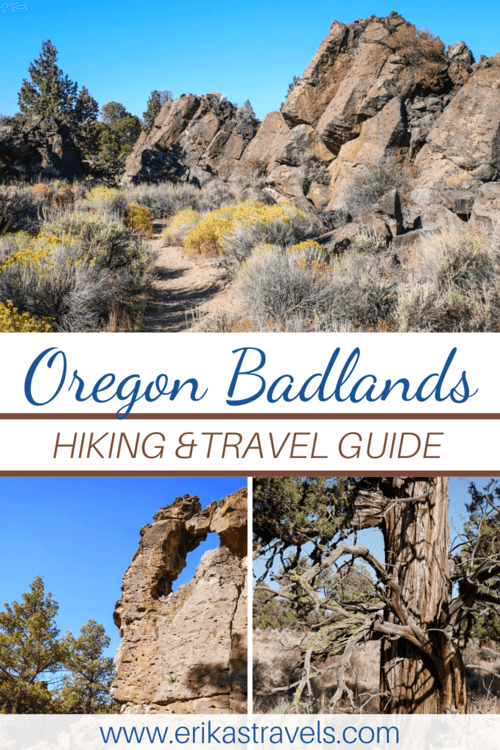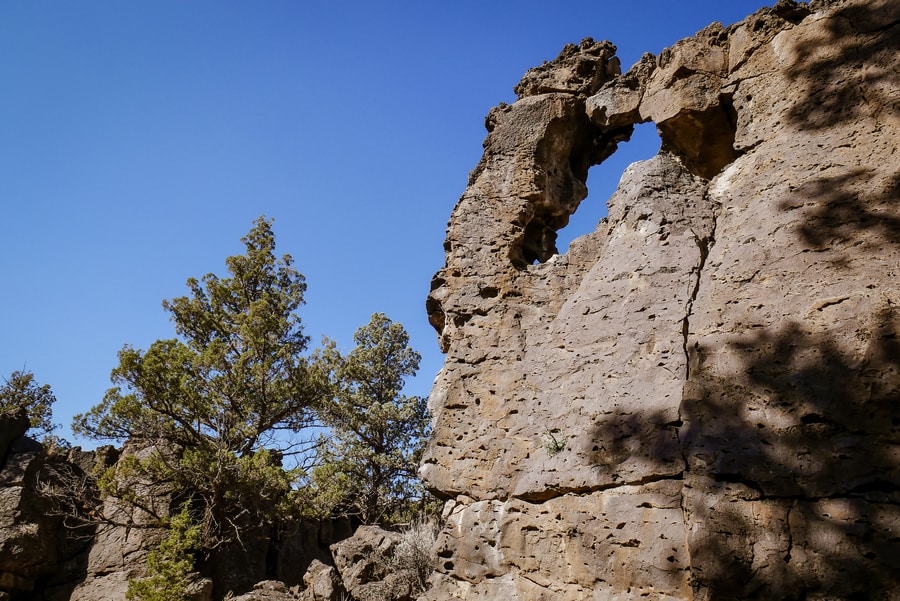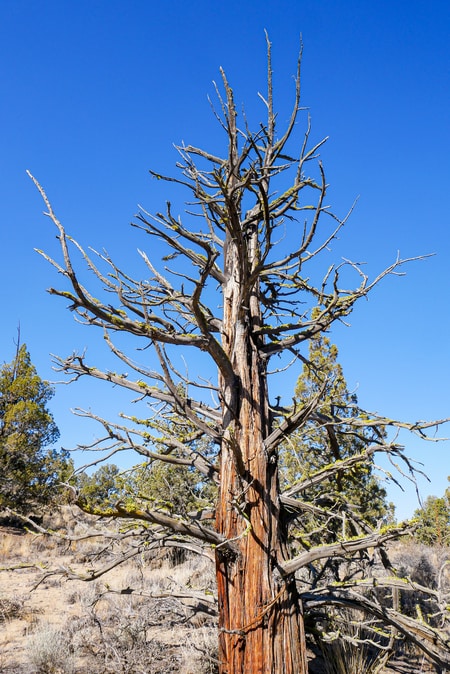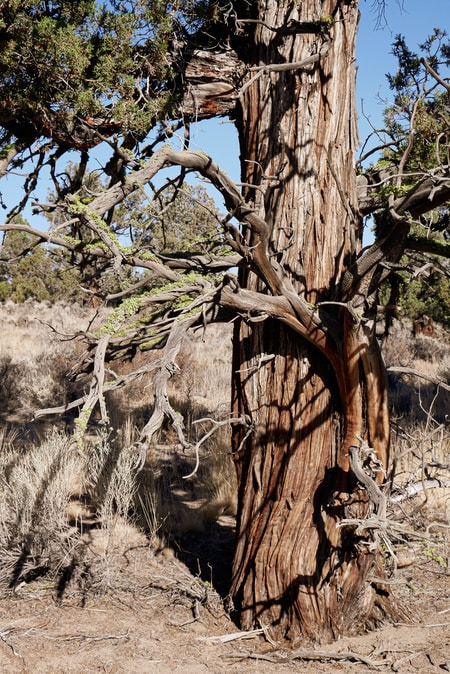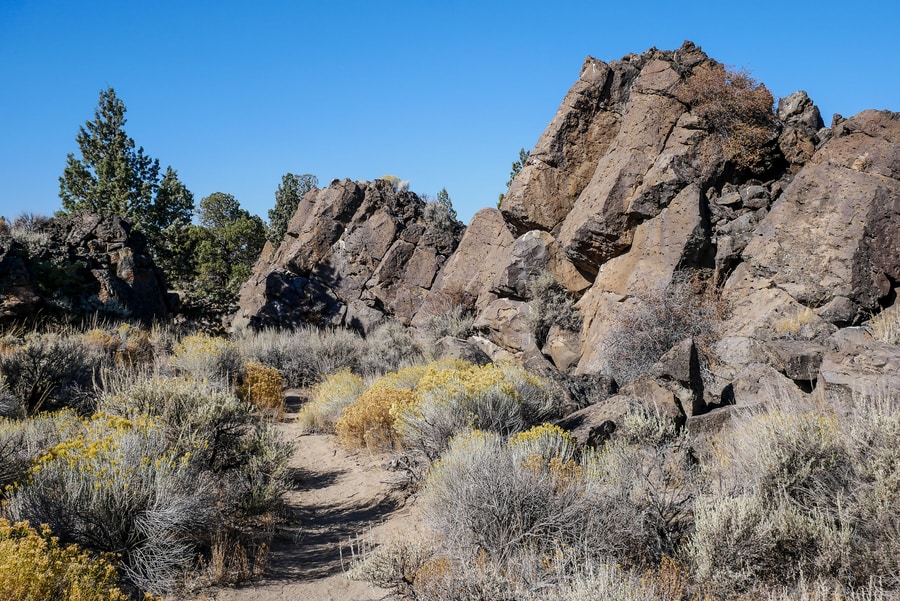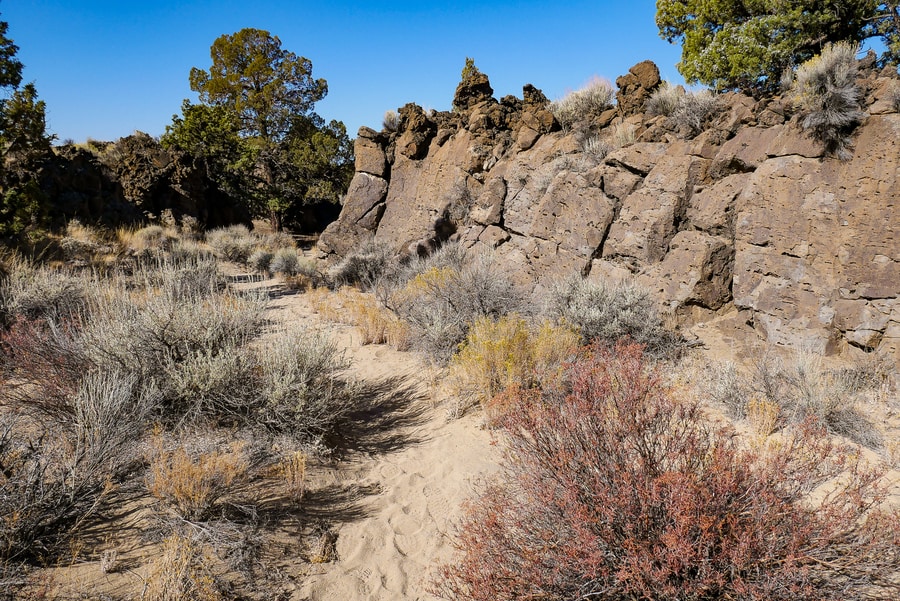
Hiking in the Oregon Badlands Wilderness
Bend Oregon is blessed with an abundance of nearby natural wonders. The town sits on the dry side of the Cascade Mountains, where forests and desert converge. Head west out of town, and you’ll be greeted by shimmering lakes, towering ponderosa forests, and snow-clad peaks. Head east, and the desert unfolds outward, as far as the eye can see.
It isn’t difficult to understand why tourists flock to the mountains and lakes west of town. The area is a dreamland for hikers, photographers, and outdoor enthusiasts.
But when crowds inundate the area’s hiking trails and flood the waters along the Cascade Lakes Byway, locals drive out into the seemingly barren nothingness of Oregon’s vast high desert.
East of Bend, the ponderosa-clad mountains transform into rocky sage-covered hillsides. One of the best places to experience the area’s desert magic is in the Oregon Badlands—a 29,000 acre wilderness protected by the Bureau of Land Management (BLM).
WHAT ARE THE OREGON BADLANDS?
The Oregon Badlands Wilderness is a sprawling area of sandy trails, juniper forests, and lava outcroppings. Though some might consider the scenery to be monotonous and lifeless, the Badlands hold a number of remarkable landforms. The area is home to some of the oldest trees in Oregon, and hosts a diverse and thriving ecosystem. It houses Native American rock art, dry river canyons, and castle-like basalt structures.
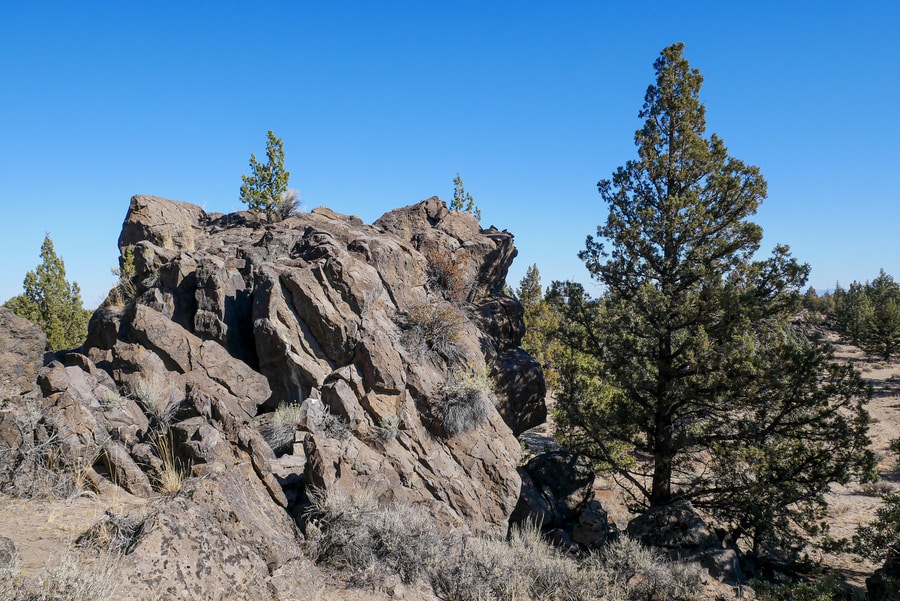
The Badlands are a testament to the area’s fascinating geology and ecology. They feature outstanding examples of ancient western juniper woodlands and basalt rock lava formations.
The solidified tumuli and basaltic mounds in the Oregon Badlands are about 80,000 years old. When lava flowed from the Newberry Volcano, it poured through a crack in the Arnold Lava Tube and scattered about the surrounding landscape. The rootless vent formed the Badlands Shield Volcano that covers much of the wilderness area.
Located approximately 16 miles east of Bend’s city limits, this barren geological wonderland offers a crowd-free escape during cooler months. It is the perfect place to enjoy a pleasant stroll, while getting to know Central Oregon’s unique high desert terrain.
FLATIRON ROCK TRAIL
The Oregon Badlands Wilderness contains over 50 crisscrossing miles of trails. To get a taste for the area’s geology, I decided to hike the Flatiron Rock Trail—a wonderful 5-mile out-and-back route that features one of the most prominent rock formations in the Badlands.
The level sandy pathway winds through jagged rock jumbles and old-growth woodlands. Along the way, it showcases native sagebrush and contorted juniper trees. The native flora emits a fragrant aroma that lingers in the crisp desert air. The wonderful smell is one of the most enjoyable aspects of hiking in the Badlands.

As the trail inches closer to Flatiron Rock, the area’s hardened lava deposits become larger and more interesting. Mini-canyons slice through the rugged terrain, leading to sheltered ravines and photogenic outcroppings.
At Flatiron Rock, the maze of basalt-lined passageways conceals small arches, caves, and rock walls.
From the top of the basalt formation, 360 degree views highlight snow-dusted peaks to the west, and rolling high desert to the east.
TRAIL OF ANCIENT JUNIPERS
From Flatiron Rock, hikers have the option of either continuing along the Castle Trail, or returning to the parking area.
Since I was pressed for time, I chose to return to the trailhead. On my way back, however, I took a small detour along the Trail of Ancient Junipers—a short and pleasant route that links up with the Flatiron Rock Trail and adds about one extra mile to the journey.
The Trail of Ancient Junipers undulates through a landscape of sagebrush, rabbitbrush, and bitterbrush. En-route, it passes by several twisted trees. The ancient junipers are a key feature of the wilderness area. Many of the trees are over 1,000 years old.
The gnarly ancient junipers stand in various shapes and forms. Some appear wizened and tangled, others boast polished reddish bark. Some burst with fragrant pine needles, others feature contorted stumps with only a few scraggly limbs.
For photographers and lovers of nature, the time-tested trees along the Ancient Juniper Trail are among the area’s most alluring features.
ADDITIONAL HIKING ROUTES IN THE BADLANDS
More than 50 miles of sandy pathways crisscross the Oregon Badlands Wilderness. While I only had time to hike the Flatiron Rock Trail and Trail of Ancient Junipers, there are countless other ways to traverse the harsh and formidable landscape.
The Badlands Rock Trail, the Dry River Trail, and the Tumulus Trail are popular alternative options that lie further afield.
For lovers of rugged desert scenery and long distance hikes, the lengthy Oregon Desert Trail is a multi-week trek that offers plenty of solitude for the adventurous and brave. The trail begins in the Oregon Badlands and traverses the Oregon Outback, Hart Mountain Antelope Refuge, Steens Mountain, and the Alvord Desert.
BEST TIME TO VISIT THE OREGON BADLANDS
Unlike the majority of Central Oregon’s attractions, the Oregon Badlands are best visited between October and May.
During spring and fall, the area is one of Bend’s favorite outdoor playgrounds. After the spring rains, the desert floor comes to life with colorful wildflowers. In the fall, splashes of yellow and red add dimension to the landscape.
In winter, when places are largely inaccessible due to snow, the Badlands become a favorite getaway destination. Though the area receives a light dusting of snow during cold months, trails usually remain unobstructed.
In summer months, Oregon’s high desert is hot and dusty. If you are visiting the Badlands from June-September, bring lots of water, lather up on sunscreen, and avoid the hottest hours of the day.
CAMPING IN THE OREGON BADLANDS WILDERNESS
For lovers of starry night skies and high desert solitude, the Oregon Badlands Wilderness presents a fantastic camping option near Bend. There are no specified campgrounds in the Badlands. However, since the entire wilderness area is under the jurisdiction of the BLM, camping is permitted free of charge.
Just make sure to leave no trace, avoid camping at trailheads, prioritize setting up your tent in previously disturbed areas, and pack out what you bring in.
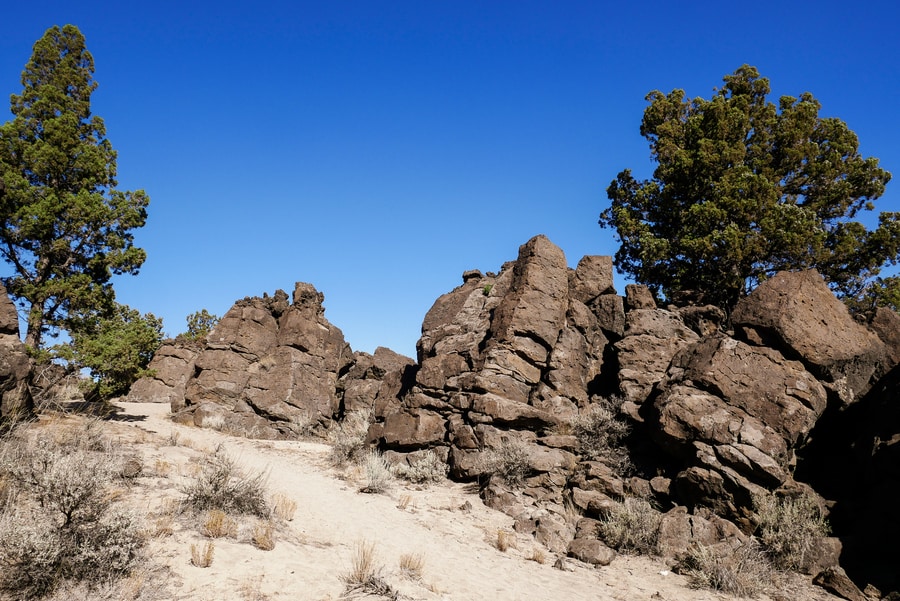
For those who wish to experience the Badlands but do not have a tent, the Rustic Ranch Cottage has direct access to the sprawling wilderness area. It is as close as you can get to experiencing the Badlands in ‘luxury.’
****
The Oregon Badlands Wilderness may not offer the most dramatic landscape near Bend, but it is a a testament to the area’s varied and complex geology.
Sure, first-time travelers to Central Oregon are far more likely to head to the Cascade Lakes, explore the waterfalls in the Deschutes National Forest, or hit the slopes for some fresh powder.
But for hikers looking to get off the beaten path, the Badlands offer well-maintained trails, fascinating landscapes, and plenty of solitude.
________________________________________
Did You Enjoy This Guide to the Oregon Badlands Wilderness? Pin It!
